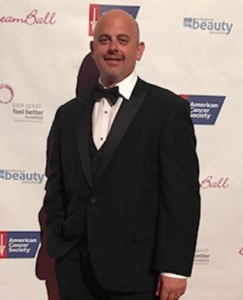Introduction
The birth of color cosmetics is said to be traced back all the way to Mesopotamia over 5000 years ago where gems and semi-precious gems were ground up and applied to both the lips and the eyelids. In 4000 BCE, Egyptian women would apply Mesdement, a dark grey ore of lead, Galena chemically known as Lead Sulfide, and Malachite (bright blue green paste of Copper minerals) to color their faces for color. They also extracted color from seaweed, Iodine, and beetles to further add to their makeup palette. (1) Somewhere around 3000BCE women in in Greece applied a paste to their face consisting of white chalk, or lead, mixed in with crushed fruits such as Mulberries. They also used lipsticks comprised of clays mixed with red Iron.(1) During the Renaissance Era it was recorded that women use Arsenic in their face powders to replace lead and it wasn’t until the early 1800s that both of these were replaced by what is commonly known today as Zinc Oxide. In 1894 we saw the birth of what is known today as the PCPC, or Personal Care Products Council. Soon thereafter and beginning in the 1900’s the world saw a rapid increase in popularity of color cosmetics as well as the conception of many cosmetic companies commonly known today such as L’Oreal, Max Factor, Avon, and Maybelline to name a few. With this surge came new product forms such as hair dye, mascara, the first liquid nail polish, the powder compact, and in 1928, the very first lip gloss. In the 1940’s leg makeup was developed out of a need of necessity to fulfill the shortage in stockings due to World War II. Over the course of the next 60-70 years the beauty industry would experience a rapid growth spurt in not just technology but also in regulatory bodies that formed the very foundation for what our industry is today.
Color Ingredients
When we speak of color cosmetic formulations, the primary desired end benefit of these products is the same as it was thousands of years ago and that is to impart color to a part of the face to enhance one’s beauty and feel good about oneself. Whether it be a lipstick, foundation, concealer, eye shadow or pressed powder, the color additives are the main constituent and the base formula is what delivers the color and differentiates the product form. These color additives typically consist of pigments, lakes, dyes, and mica and their differences are explained below:
Pigments– Insoluble particles that impart a color to a product. Inorganic pigments are derived from minerals and have good stability to heat and light. Organic pigments, by nature, are carbon based and tend to have a brighter appearance to them. Commonly, pigments are often surface treated and sold in dispersions of various esters and oils to facilitate ease of use in manufacturing and ensure homogeneity of the color.
Lakes– Produced through precipitation of FD&C soluble dyes with metallic salts such as Aluminum salts. Lakes are useful to extend the color range of a shade palette. These ingredients are often surface treated and sold in dispersions of various esters and oils to facilitate ease of use in manufacturing
Dyes-Predominantly water-soluble, these ingredients are used in skin care, body care, fine fragrance, hair care, and color cosmetics. There are some dyes that are oil soluble as well.
Mica– A name given to a group of silicate materials that are used to add shimmer and sparkle
Even though all the ingredients above can be used across the broad category of color cosmetics from eye shadow and pressed powders to lipsticks and foundations, for the purposes of this article we will focus solely on the formulation of lipsticks and liquid lip products.
Physiology of the Lips
The physiology of the lips plays a key role when developing lip products. By nature, the lips are thinner than the skin on the rest of your body and therefore are more sensitive to changes in temperature and texture of a product. Therefore, comfortability and wear are 2 key product parameters that must be properly balanced during development. The lips also do not have hair follicles or oil glands and as a result of this are more prone to drying out especially in the winter months or in low humidity climates. As a result of this, key benefit claims such as hydration and intense moisturization are common for this product type. Finally, the lips do not contain melanocytes found in the skin and as such the color from the lips comes from the blood vessels directly under the surface of the lips.
During aging the lips begin to undergo biological changes like that around other parts of the face and body. The shape of the lips begins to become narrower and longer. They begin to lose volume and color overtime making them appear paler and less vibrant in color and the lines on the lip surface begin to deepen often causing the unwanted side effect of bleeding and feathering. Furthermore, they often present themselves with an unsmooth color tone and appearance.
Environmental exposure can also cause premature aging and thinning of the lips. Chronic UV exposure causes a breakdown in the collagen making the lips appear less full and voluminous. Dehydration from extreme weather conditions or poor health habits can lead to premature and undesirable chafing while exposure to environmental pollutants, i.e., free radicals, and smoking can lead to premature lip lines above the top lip.
Lip Product Formulation
Given the sensitivity of the lips and the desire to keep them young and vibrant looking there are multiple lip products out on the market today each with their own unique benefits and performance. Typically, colored lip products are found in 4 distinct anhydrous forms:
- Lipsticks
- Liquid Lipsticks
- Lip Gloss
- Lip Balms
Traditional lip formulations are composed of emollients, oils, waxes, and colorants with the ingredient ranges varying to deliver a stick or liquid format. Emollients/natural oils such Castor Oil, Lanolin, Shea Butter, are primarily used to help disperse colorants, while providing moisture and smooth application. Structuring agents such as Ozokerite, Polyethylene, and Carnauba and gellants are often used to give the sticks rigidity and stability while film formers are often utilized to improve the transfer resistance and wear properties. Benefit ingredients such as vitamins, natural oils, Hyaluronic acid, fragrance, etc. can all be added as well based on the target audience and desired claims.
In terms of finish, lip products typically are found in multiple styles ranging from matte, satin, pearl and shine with sheer to full coverage levels. From a performance perspective, today’s products are a great evolution to those from a century ago offering intense, continuous hydration, waterproof and transfer proof properties, SPF protection, and even all-day long wear.
Conclusion
Over the years the line between color cosmetics and skin care has become less defined. While the primary function of a color cosmetic is to provide color to the face, lips and eyes, the formulas themselves have become more technologically advanced and multi-faceted. Today’s products offer the consumer benefits beyond color such as anti-aging (wrinkle reduction), sun protection, anti-pollution, reduction of oily and acnegenic skin, minimization of scars, and even tattoo and hyperpigmentation coverage. Additionally, companies continue to innovate in new color cosmetic product forms and test methodologies to deliver aesthetically pleasing, high performance products. For certain, this is a space that will continue to not only innovate but also adapt to today’s complex global challenges while pivoting to consumer needs for years to come!
References
Authors

Peter Konish has been in the industry for 25 years and is currently the Director of the Lip Category, Product Development and Innovation for Coty. Prior to this, he was the Global Director of Technical Operations in the Skin Health division of Johnson and Johnson. In this role Peter was responsible for Process Development, Packaging Development, and External Development/Innovation. Before moving to Technical operations, Peter spent 13 years at NeoStrata in Product Development overseeing the development of numerous Anti-Aging, Prestige Beauty, and Dermatological skin and body care. Peter also spent 9 years at L’Oreal in its Fine Fragrance division working on such brands as Ralph Lauren and Kiehl’s. Peter has a background in polymer chemistry, he has co-authored numerous book chapters and scientific publications, and has been an industry speaker at SCC events and annual AAD meetings.

Jeanine Smith has been in the industry for 19 years with her core focus in color cosmetics. She is currently the Senior Manager of the Lip Category at Coty. Prior to joining Coty, Jeanine was a Senior Manager at Avon Products where she worked in product development for the Eye, Nail and Lip categories.
